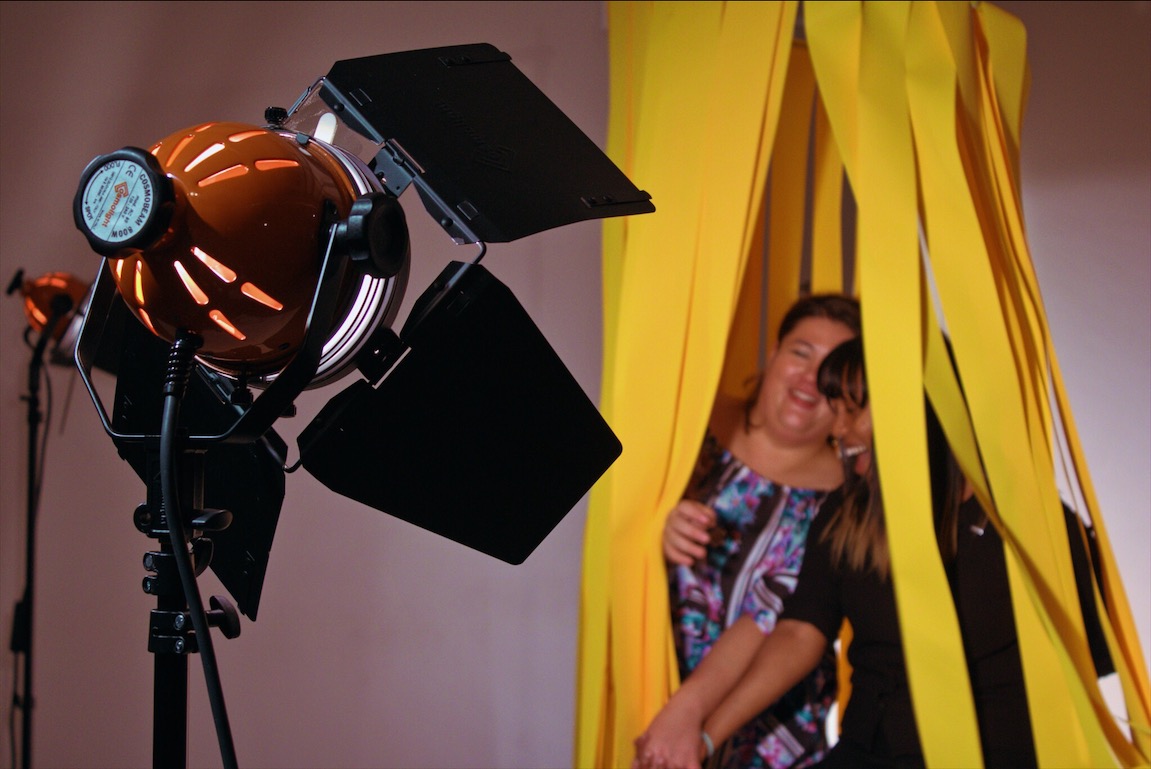
It it perhaps a cliche at this stage to address the issue of science versus all-consuming feelings, existentialist longing and, dare I say it, love? Intimacy, the winter exhibition at the Science Gallery, adequately dismantles our preconceived notions of the most mundane human contact to the complex strangeness of close relationships.
The first installation is effectively a kid’s dream, rolls upon rolls of endless stickers there for the taking, emblazoned with the words “Please Touch”. It’s a perfect way to open up the space yet also a provocative move for an exhibition that explores our own bewilderment with the concept of intimacy and the barriers we choose to ignore or uphold. What is intimacy? What does it mean to be intimate? Intimate touch is a minefield. Yet the artists invite us to embrace the awkwardness, shyness or aversion we may feel and explore our boundaries of the human connection we feel at first touch.
We struggle with the social etiquette of greeting nowadays. Do we shake their hand? Hug? Kiss? One cheek or two? Or can we wave? But wait, is that a bit cold? The anxieties that play in our minds over the smallest gestures are taken apart and regenerated in a humorous and discerning manner. I meet Stevie, a social robot who has been programmed to emulate the very complex social cues of saying hello. The concept of robots mimicking humans has always been unnerving, but it is an endlessly fascinating mode of analysing human interaction, and may be one of the very few true means of objective self-scrutiny.
The aesthetic and conceptual aspects of the exhibition are beautifully consolidated in the work of French designer and innovative engineer Arthur Gouillart. His work “Emotion Capture” is made of 3D sculptures of two people kissing. Tiny magnets are placed on both tongues and using animation technology, the movement of their intimate moment is graphed, and then the artist 3D prints the form. It’s a simple idea and an effective one, which has oddly become a commercial venture: couples can pay for this service and have their own sculptures fashioned or wedding rings made.
There is a lovely sense of progression throughout the exhibition, guided by the superbly informed team at the Science Gallery, whereby the deeper confines of intimacy are probed to an increasing extent. What begins in fun, giddy “laugh at how awkward us humans are” territory develops into a series of poignant questions and mind games. Perhaps the most theatrical installation is “21 Grams: Poetic Justice”, a memory box, intimate urn and suicide kit – very Chekov meets Steampunk. The urn, in which 21 grams of a lover’s ashes are stored, is phallic shaped. (In 1907, 21 grams was speculated as the physical weight of the soul) The heteronormativity of this piece is amusing in a sense, because the design itself suggests a more technologically advanced yet socially repressed parallel past. This is not an eerie dystopian reality presenting the potential prospects of intimacy and technology. It’s a hypothesis of how a consumptive Victorian society would react to available technological advancements imbued with the bleak romanticism of the era.
However, the exhibition treads very much in Black Mirror-style waters with the work “Physics Does Not Crash in Soft Time”. One day, when Nadim Choufi became older than his older brother after he passed away, he was compelled to transfer all of his files onto one hard drive and put them on display in this exhibition. This collection of personal memories from a much too short lifetime are there to be viewed, altered or deleted on the whim of a spectator. We are faced with the issue of our own virtual life and how parts of us may remain online regardless of our wishes or our loved ones. It’s tragic, troubling and perplexing. Like so much of this exhibition, the work lends itself more to posing questions about intimacy rather than answering any.
Intimacy is a beautiful, profound compilation of works that will vex and delight, forcing us to contemplate the deep crevices of human connection that we long to understand.






